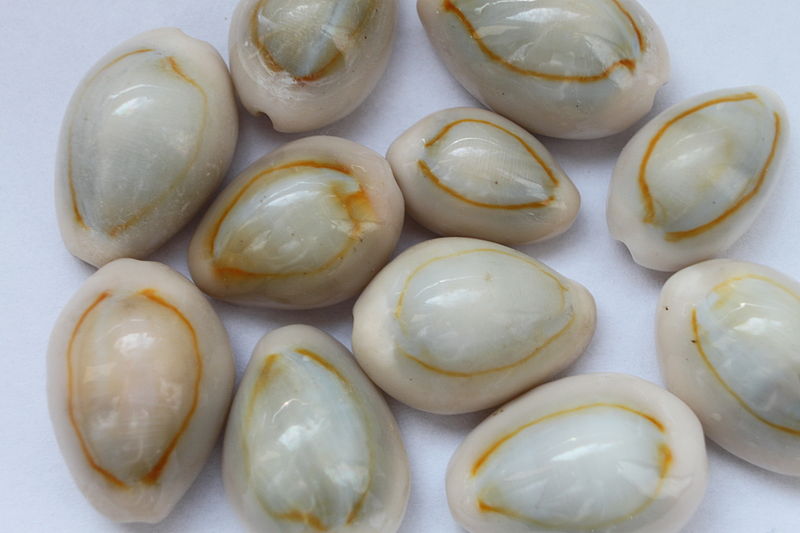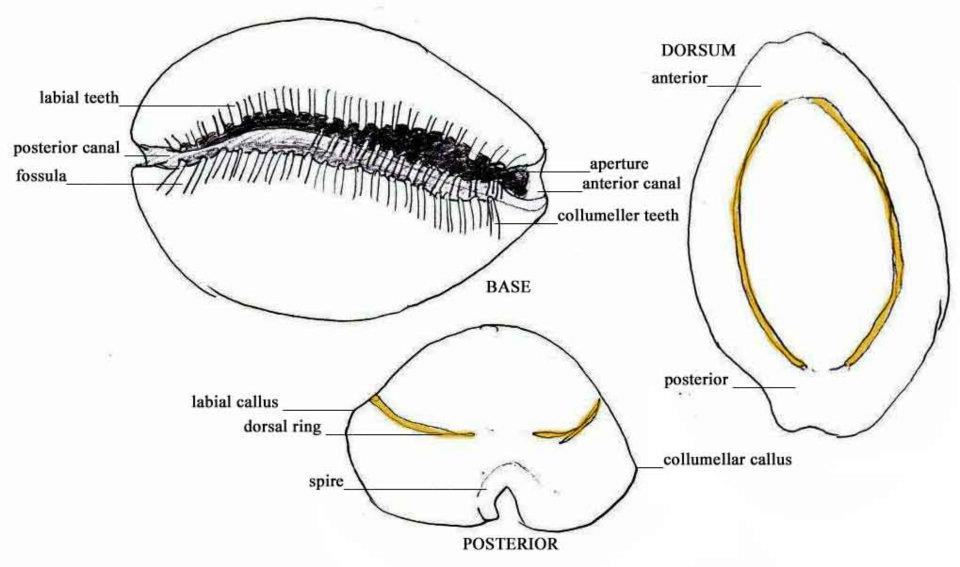Overview
Brief Summary
Physical Description
Shape & Size
Identification Resources
Ecology
Local Distribution & Habitats
Biogeographical Distribution
Crypsis & Defense
Life History & Behaviour
Growth & Development
Feeding
Locomotion
Sensory Systems & Behaviour
Reproduction
Evolution & Systematics
Systematics / Phylogenetics
Morphology and Physiology
External Morphology
Internal Anatomy
Conservation
Trends & Threats
Wikipedia
References & More Information
Bibliographies
Biodiversity Heritage Library
Search the Web
Names & Taxonomy
Synonyms & Names | External Morphology

The adult gold ring cowry has a smooth rounded dorsal surface. On the base,
large teeth extend
about one-third of the way across and line the thin aperture. The base
and sides are cream and the dorsal surface is bluish white with an encircling gold band. Canals are found at both the anterior and posterior end with a spire found at the posterior. The morphology of the adult shell is somewhat variable. Juveniles more closely resemble a typical gastropod
with obvious coiling and a larger aperture.
Differences in shell shape and colouration in gold ring cowry adults.
(Wikimedia commons user:Bin im Garten) 
When the fleshy body of the gold ring cowry has emerged from within the shell, the mantle flaps extend and encase the shell - a colour and texture change. This mantle is mottled brown and cream and has marginal tentacles and papillae. Under the mantle is a large muscular foot with a white underside. Protruding from the front is branchia which extends and and two eye spots, each situated on sensory stalks. The branchia is a siphon which is curved and also has sensilla surrounding the end.

|
|